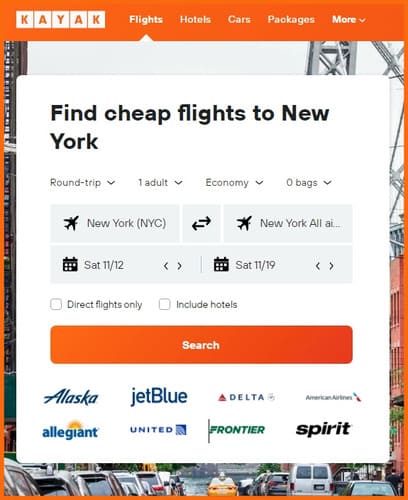The Origins of Business Class
Born from the desire to offer economy passengers an enhanced travel experience, business class came into existence during the 1970s. Back then, it was just a separate section in the main cabin, set aside for frequent fliers and full-fare economy passengers. The origins of business class are surprisingly recent. As competition between airlines grew intense, the demand for a middle ground between first class and economy emerged. Those willing to pay a little extra for comfort, but not quite ready to splurge on first class, were left stranded. This gap was bridged by the introduction of business class, offering an in-between alternative that hit the sweet spot.
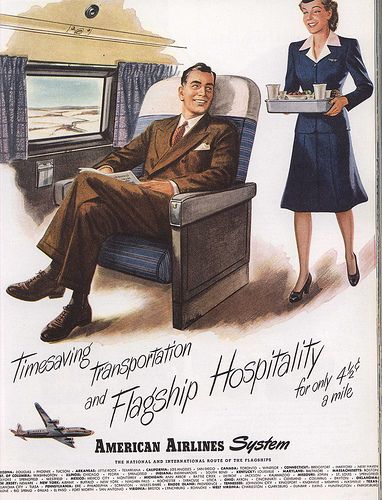
1970s Business Class
The late 1970s was a time of transformation for airlines. Faced with the conundrum of filling up extra seats on larger planes amid rising fuel costs, some airlines introduced new classes that offered passengers a unique blend of economy and first-class features. This innovative approach soon caught on, with other airlines embracing similar strategies.
Over the years, business class has continued to evolve, mirroring the changing needs and expectations of travelers. By the end of the 1990s, seats became wider, featuring fully adjustable head and footrests. Fast forward to the 2000s, and the comfort bar was raised even higher with the introduction of completely flat beds in business class cabins.
Entering the 2010s, airlines and seat manufacturers began to explore a variety of configurations to further elevate the in-flight experience. As a result, a host of new and improved seat types started to make an appearance.
Today Business Class
Meanwhile, the advent of premium economy class prompted airlines to innovate even further, ensuring business class offerings remained unique and luxurious.
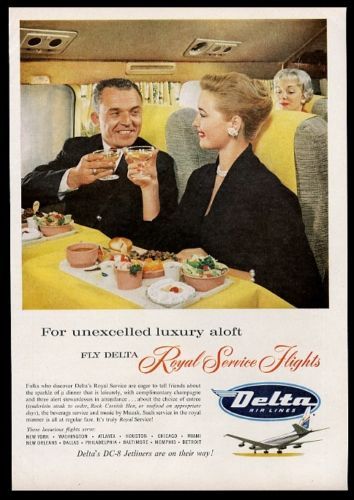
The background of the First class by plane
The appearance of the first class came three decades after the first commercial passenger flights, which began in 1919 with the airlines that would later give rise to British Airways and KLM.
On those flights, some food was already offered on board, and it was not until a decade later that the figure of the cabin crew would emerge, at United Airlines. In the 1930s, people traveled in comfortable seats, but it wasn’t first class.
The appearance of the first airplane with a pressurized cabin, in the Boeing 307 Stratoliner in 1938, allowed flights to be carried out above 4,500 meters, and opened the door for airlines to offer better services to compete against other means of transportation. transport.
first commercial flights
In the first commercial passenger flights, in 1919, meals were offered on board, and a few years later British Airways offered a more exclusive menu in its Silver Wings service.
After World War II, more than 10,000 Douglas C-47s built for military use were converted into civilian aircraft, sold at low prices to airlines that saw how their business could improve if passengers traveled more comfortably.
On that plane and its predecessor, the Douglas DC-3, you could travel in seats that extended like a lounger; but technically it wasn’t a first class.
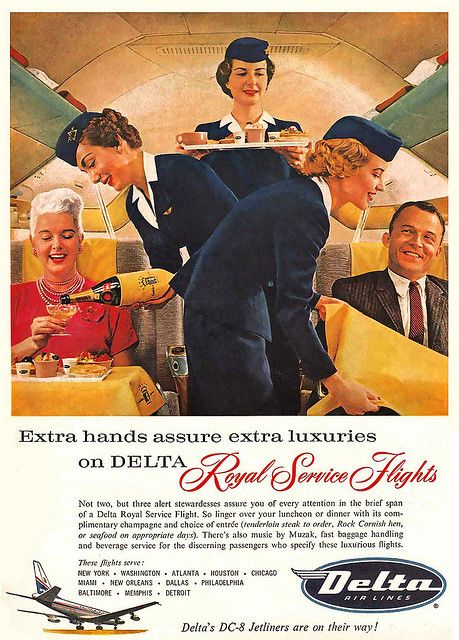
1952, a key year
One of the key years was 1952. The association that brought together the airlines, IATA, authorized that an airplane can have different types of rates for the same flight.
Pan Am was one of the first companies to take advantage of this regulation change to split its cabin in two on its DC-6Bs that crossed the North Atlantic. This airline, which would become the largest in the world, had three configurations: the entire cabin was first class -with 44 seats-, or it was all economy (called the Rainbow category, with 109 seats) or combined both classes, with 82 seats. .
In 1952 IATA authorized that the same flight could have several types of fare. That opened the door to the division of the cabin in two classes
This first class, one of the first in history, featured innovative seats that extended to better rest the legs, a novelty that was later transferred to the Boeing 377 Stratocruiser.
Luxury in the air
An advertisement from the first half of the 1950s invited people to fly to Europe “sleeping in your private cabin,” he quotes.
In those ads, a couple could be seen sitting as if they were in a lounge, then drinking champagne served by a waiter, and with a bunk above the seat.
The Stratocruiser marked the turning point in airborne luxury in the 1950s, and reigned in the skies until 1958, when the Boeing 707 entered service, Kelly Cusack reports on the Everything Pan Am website.
The wide space of these planes allowed for a lower level where there was a room similar to that of a bar, and in the galley meals were prepared for 100 passengers. There were also 28 sleeping berths with similar comfort to a train cabin.
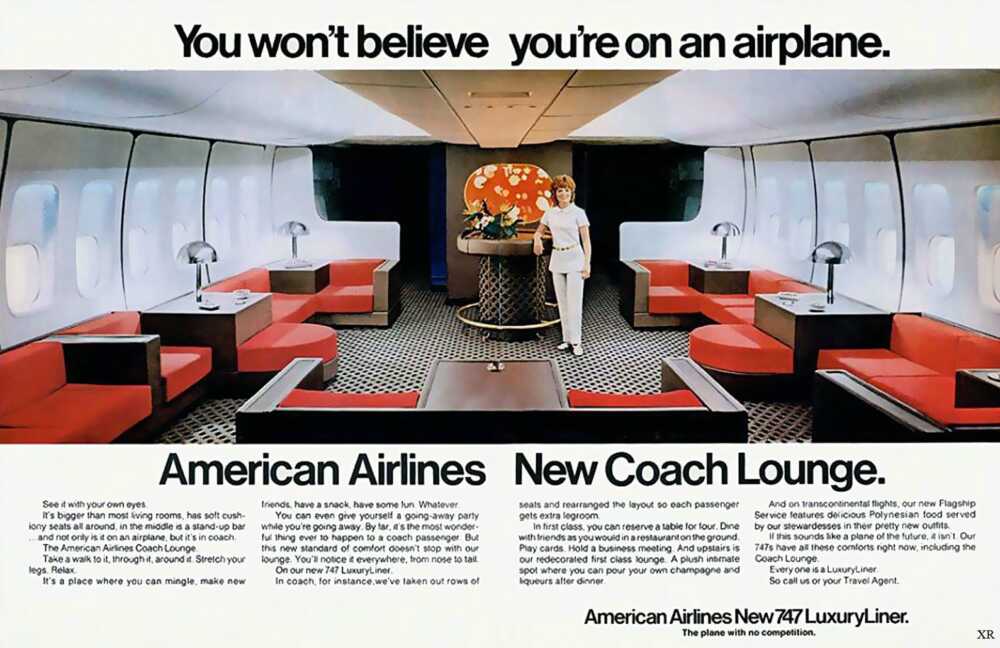
Pan Am service
Pan Am renamed its most exclusive service The President, where passengers ate elaborate dishes such as lobster or rack of lamb served with fine china and silverware. The Stratocruisers were split in two. At the bottom there was an area where first class passengers had a drink as if it were a lounge At the bottom of the Pan Am Stratocruiser was an area with bunk beds, where breakfast was served while the passenger was lying down, just like in a five-star hotel.
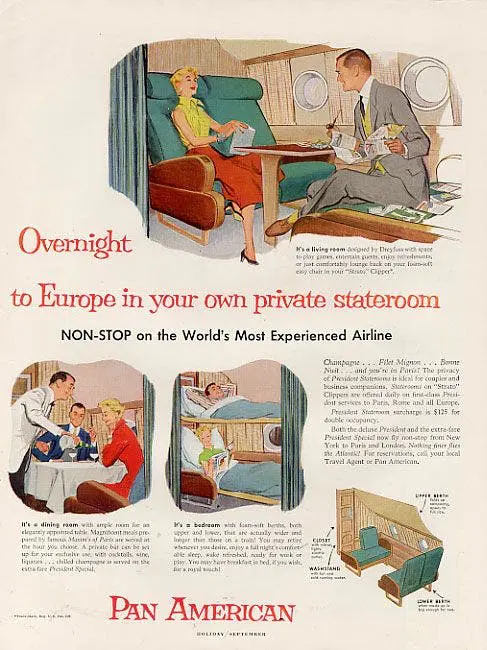
The expansion of the first class
TWA (Trans World Airlines) was not far behind and launched a higher quality service on its California Star plane, which flew from Los Angeles to New York. Being the airline of choice for celebrities like Cary Grant to fly to Hollywood, it became known as “the airline of the stars.”
In Europe, the predecessor companies of British Airways, in 1927, already offered a higher quality menu on Silver Wings flights between Croydon (south of London) and Paris.
But only when BOAC (British Overseas Airways Corporation) bought the Stratocruiser in 1952 is it considered that the first class came to this company.
Back then, passengers were offered six services, between meals, afternoon tea, and a continuous pass of canapés. To avoid hot flashes, the company delayed the flight time between London and Paris by 80 minutes so that passengers can eat with peace of mind.
The configuration that is maintained
In the Boeing 707 and DC-8 the cabins were organized in a similar way to what we know today. Already with 200 passengers on board, and in an effort to maximize income, the berths and other amenities disappeared, but first class remained the pinnacle of luxury.
It continued like this until the second part of the 1970s, when several companies such as KLM, Air Canada, American Airlines and Air France divided the cabin into a third class, in an antecedent of the business category. But that is another story.
First class Airship
It was clearly the best menu you could get in heaven. On board the “zeppelins”, the gigantic German airships that crossed the Atlantic at the beginning of the 20th century, the travelers ate, more abundantly than the kings and certainly better
German cuisine, quite close to Russian cuisine, received in the 30s of the 20th century a powerful tool for winning the sympathy of foreigners from all over the world.
From 1928 to 1937, when the accident of the Hindenburg showed that the bright future of lighter-than-air ships might one day dissipate like smoke from a fire, its passengers tasted food that surpassed the cuisine of luxury cruise ships. The aircraft themselves were about 250 meters long and were traveling at speeds of more than 100 kilometers per hour.
Samsung Store: Galaxy Z Fold4
Airships dominated countries and continents, but flying them still took a long time. The journey from Brazil to Europe takes three days. And obviously, the passengers had nothing to do on board, except look out the window at the ocean, eat, drink and read.
Meals on board
Meals were served regularly and generously. The use of alcohol was so active that “prairie oysters”, a special hangover cocktail made from egg yolk with brandy, was an indispensable part of the cocktail menu of the onboard bar. Meals on board were included in the price of the ticket, and passengers only paid extra for drinks.
Meals aboard the Graf Zeppellin and her classmate, the Hindenburg, were served in a dining room designed to match a high-end European hotel. Xaver Maier, the head chef who served the passengers on the last tragic flight of the Hindenburg, came to work there from the Ritz Hotel in Paris. Because of this, the food, by the way, didn’t always match American tastes, notes Dan Grossman, historian and author of Zeppelin Hindenburg: An Illustrated History. –
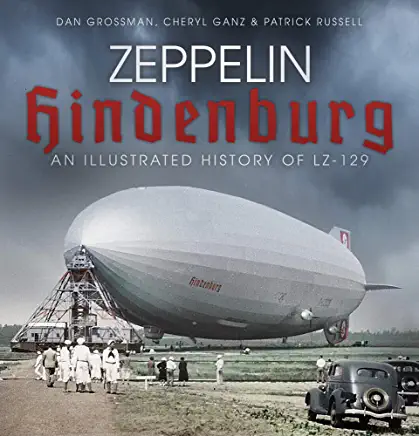
The type of food in German airships
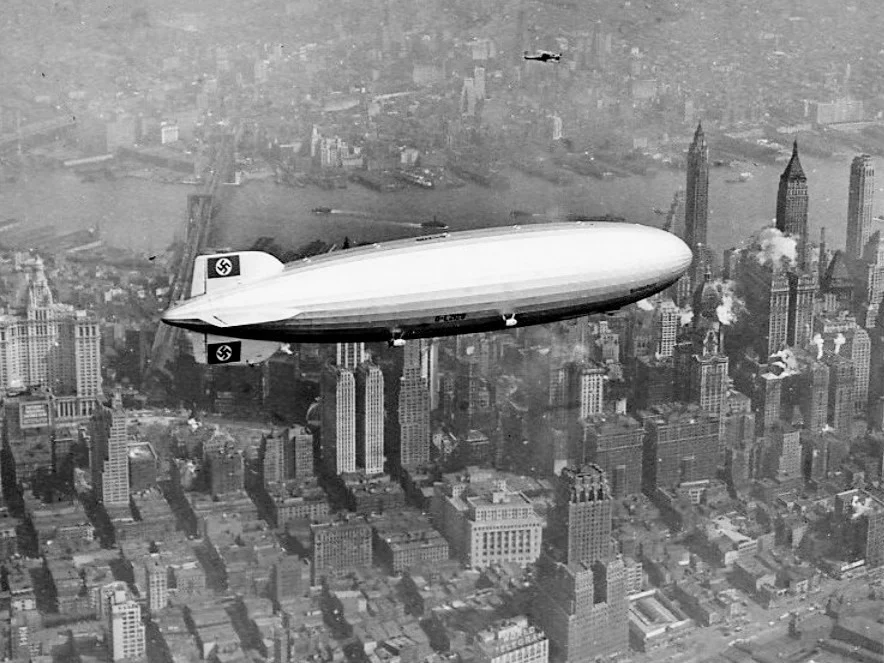
The most important thing to say about the Hindenburg food is that it was very German food. Some Americans even complained that it was too heavy and not used to their tastes.
The basis of the menu was meat. The vegetables, when they appeared on the plate, were usually drizzled liberally with butter or cream sauce. In general, the food was clearly not adapted to the needs of foreign customers.
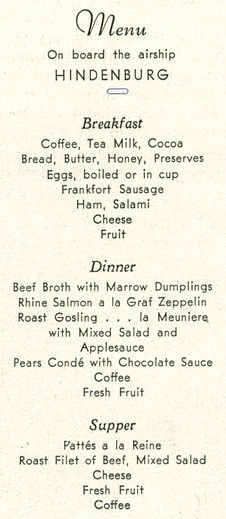
The bar drinks were also more of a German taste. Then, on the first flight of the Hindenburg, the bar ran out of gin. Simply because Germans don’t drink much gin. The British and Americans drink a lot of this drink. And the very fact that it ended shows that the hosts did not really think about the tastes of their passengers.
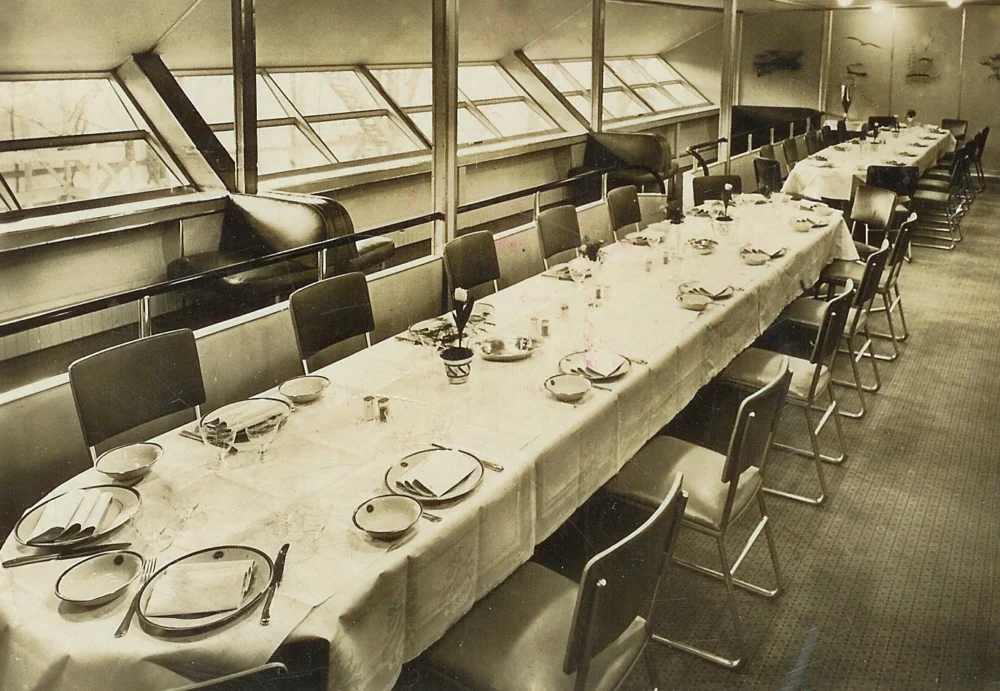
How was the Graff Zepellin Menu?
Zeppelins flew much lower than modern aircraft. And your passengers don’t experience the effects of cold, dry air and low pressure, which distort the taste and smell of meals on board. Therefore, the food on the aircraft was much tastier than what we eat today, even if the menu did not include ducks fed with cabbage and champagne.
The owners spared no expense. In The Great Airships: Their Triumphs and Disasters, John Toland describes the Hindenburg’s pantry: “turkeys, live lobsters, gallons of ice cream, crates of all kinds of fruit, American whiskey, and hundreds of bottles of German beer.” The Graf Zeppelin carried 7.5 pounds of food per passenger per day on board, either fresh or prepared in jars signed by the chef’s hand.
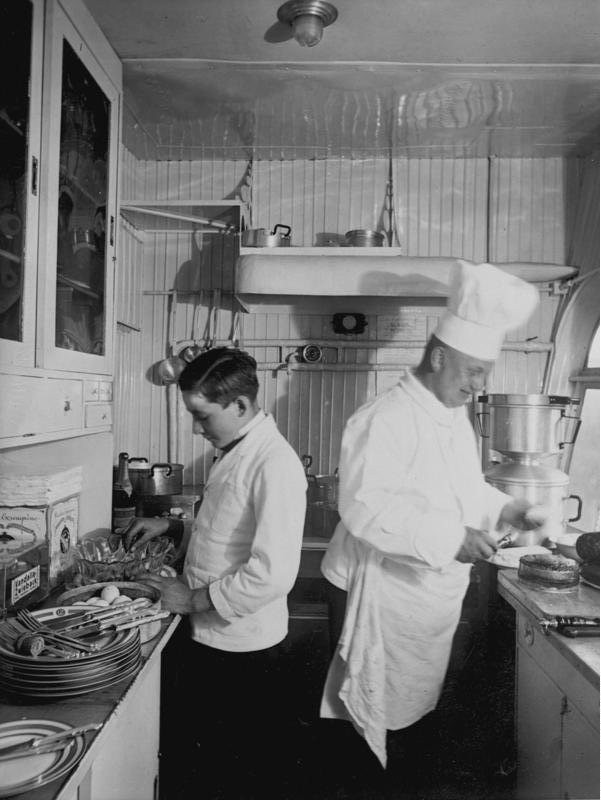
There was hope that these commercial Zeppelin flights would one day be profitable, and were a way of showing off the cultural power of Germany, says historian and writer Richard Voss, author of Eating in Air and Space: The Amazing History of Food and Drink. in Heaven. ” –
It was an instrument of national prestige. He showed that Germany, which had suffered a crushing defeat in World War I, now had the fastest and most luxurious means of transportation. They could serve caviar with every meal, they could do whatever they wanted because they didn’t really have to earn money.”
Joseph Goebbels himself, who headed the Propaganda Ministry, provided funding for the venture and praised its ability to represent Germany on the world stage.
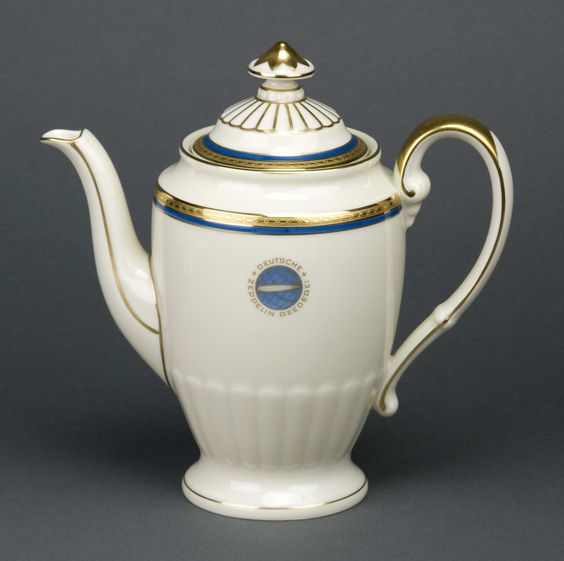
The restaurant opened at about 8 am. The tables were set with vases of fresh flowers and blue and white china. Despite the weight restrictions always associated with aeronautics, the plates and teapots were inlaid with real gold and were very heavy. But upon arrival at the airship, the passengers were provided with a white napkin in an individual envelope. They were to wear it every day of the trip, apparently to save weight. Although, to tell the truth, it is difficult to understand this savings in napkins in the 236-ton Hindenburg.
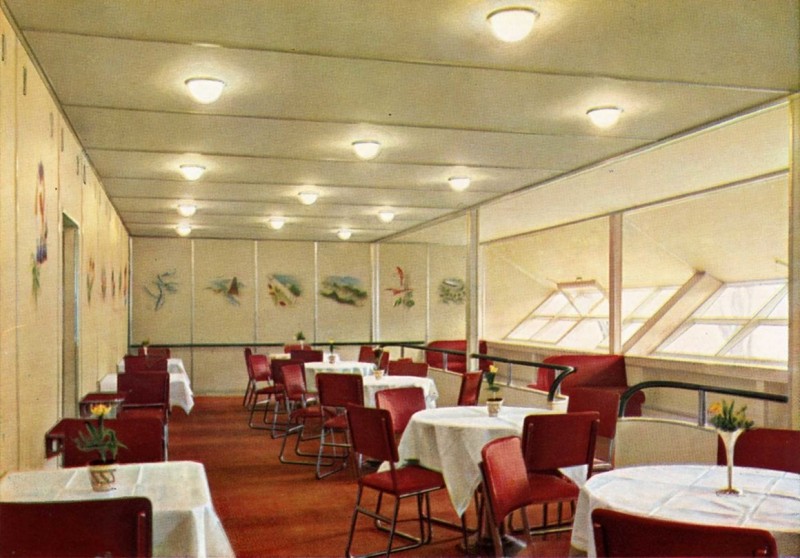
The Hindenburg’s dining room was furnished with modern, light aluminum furniture in the Bauhaus style. At 46 feet long, this dining room could accommodate all passengers at the same time, either at separate tables or at a common table. “They went out of their way to make it feel like a land-based restaurant,” says Foss. On Hindenburg’s last voyage, guests were served the following traditional German breakfast:
- Coffee, milk tea, cocoa
- Bread, butter, honey, jams
- Eggs, hard-boiled or soft-boiled
- frankfurters
- ham, salami
- cheese and fruits
At that time, cocoa was considered a healthy food that aided digestion and strengthened the body. Every morning the buns were baked in an electric oven. The kitchen and its equipment were made of aluminum to limit weight and minimize the risk of a catastrophic fire. Let’s not forget that all this was surrounded by combustible hydrogen.
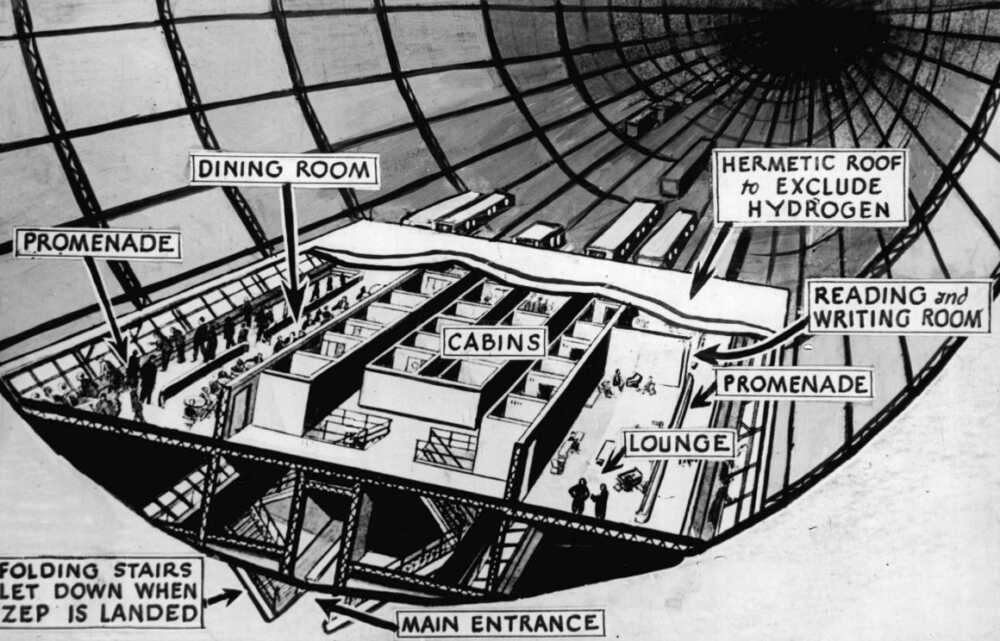
How were the cocktails on board an airship?
The guests spent considerable time in the bar, the only place on board where they could smoke (as incredible as it may seem). There, 15 wines were served, as well as a wide range of cocktails in the categories “Sours”, “Flips”, “Fizzes”, “Cobblers” and “Cocktails”. In addition to the more common cocktail orders, the bar offered several branded ones: LZ 129 (this is the aircraft identification number, the cocktail was mixed with gin and orange juice) and Maybach 12 (its formula has been lost). .
A unique piano was also installed in the bar. Weighing in at 356 pounds, it was made of duralumin. The outer side was covered with light pigskin. The instrument was removed from the aircraft before the start of the 1937 travel season, and thus he escaped death in an accident. However, it was lost a few years later during a bombing raid in World War II.
The guests were able to enjoy two types of champagne, five types of liqueurs, a Strasbourg terrine, Westphalian ham and beluga caviar.
When the Hindenburg sank, some 3,000 people had the experience of having traveled in a German airship. It was a real world standard for speed, luxury, and gourmet cuisine.
How much did the ticket cost in the airship like the Hindenburg that flew from Germany to America?
The price of a ticket in an airship in 1936 cost 1000 reichmark.
In 1936, with 1,000 Reichsmark in Germany, a variety of goods and services could be purchased. For example:
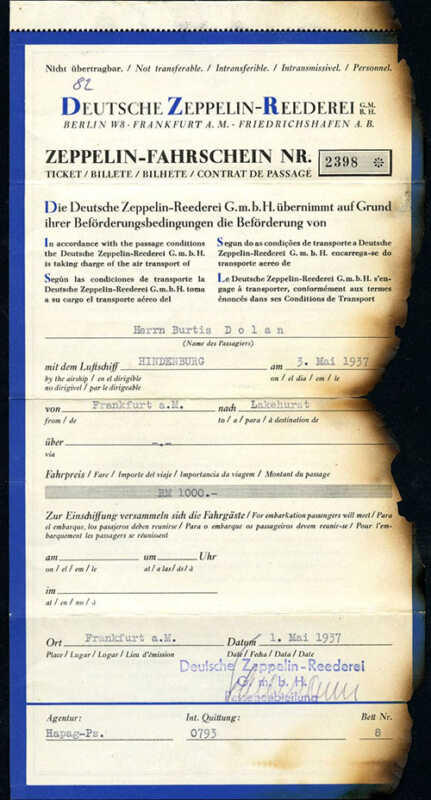
- Rent for an average monthly apartment: around 30-50 Reichsmark
- One kilogram of beef – about 5-8 Reichsmark.
- A bottle of wine: around 2-4 Reichsmark.
- A ticket to the cinema: between 0.50 and 1 Reichsmark.
- A tram or bus ticket: around 0.20-0.30 Reichsmark.
- A dozen eggs – about 1-2 Reichsmark.
- A liter of milk: about 0.40-0.60 Reichsmark.
- A regular size loaf: between 0.50 and 1 Reichsmark.
- Opel Car Super 6 RM 3850
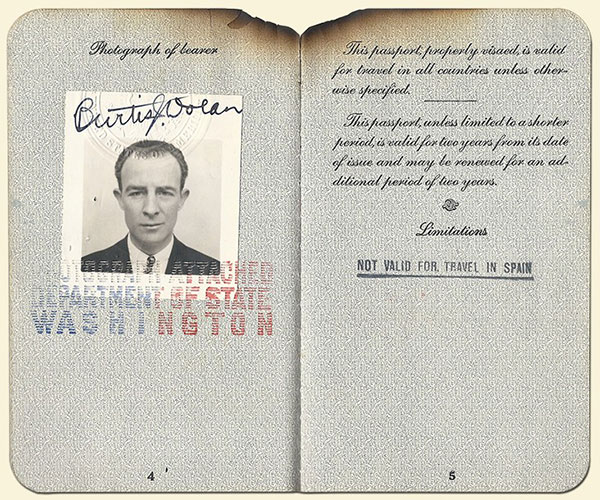
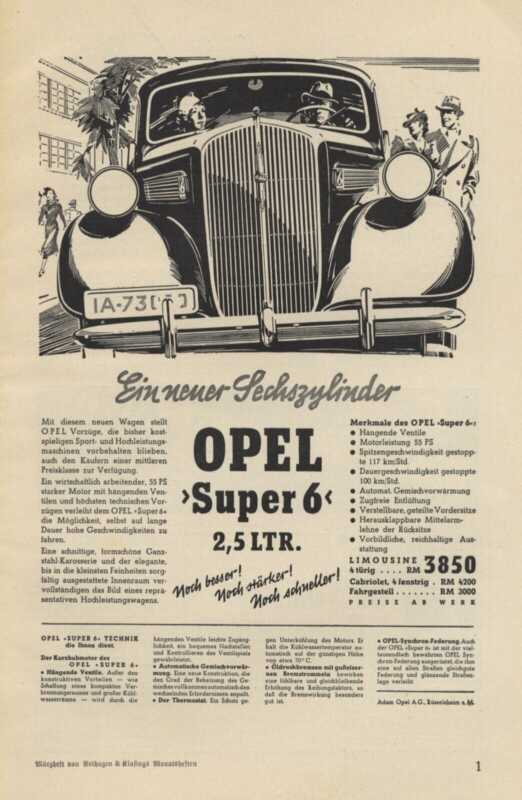
The Hindenburg appears
In 1936, the Hindenburg made its appearance, an iconic model also from the DELAG company that was dubbed “the world’s first flying hotel”. Its interior was designed by Fritz August Breuhaus, also in charge of the design of Pullman coaches, ocean liners and some warships of the German Navy.
The space for the passengers was divided in two and was inside the hull of the aircraft. The cabins did not have bathrooms, only toilets.
The device promised to become the intercontinental means of transport par excellence until barely a year after her birth, after having successfully crossed the Atlantic, the Hindenburg caught fire on May 6, 1937 trying to land in Lakehurst, USA.
35 of the 97 people traveling on it died and it never returned to recover the heyday of these commercial flights that gave way to airplanes
Related



